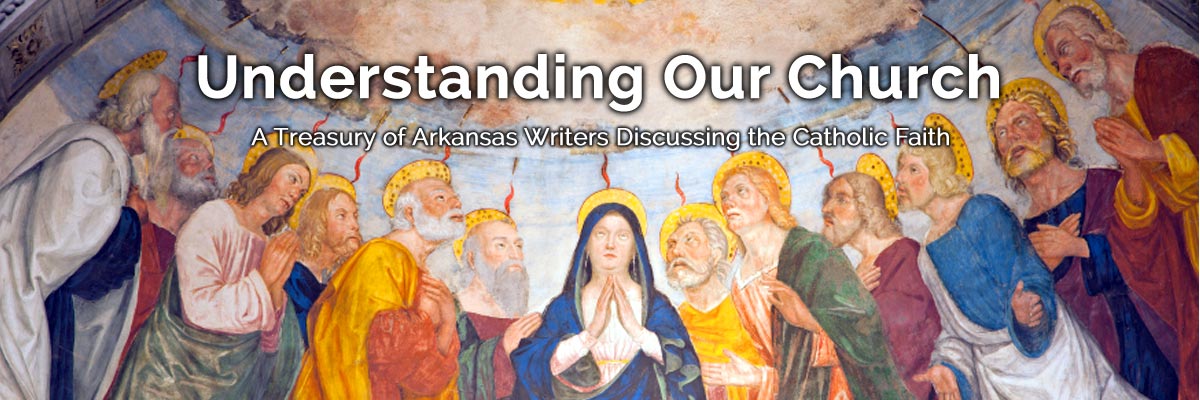Official Website of the
Catholic Diocese of Little Rock
Religious images, statues are not idols as described in Old Testament
Published: July 6, 2017
By Father Jerome Kodell, OSB
Subiaco Abbey
The First Letter of John ends with the terse sentence: “Children, be on your guard against idols.” (5:21)
This is rather startling because the verses leading up to this one have nothing to say about idols. John seems to be closing his letter by introducing a new unrelated subject without any explanation or development.
Though the prohibition of images among Christians is meant to protect the faithful from demeaning the reality behind the images, it presents a worse danger: subtly denying the reality of the incarnation, a view that, in the early Church, led to the heresy of monophysitism — the denial of Jesus’ humanity — which is exactly what John was warning against. (1 John 4:2; 2 John 1:7)
This is true only if “idols” are taken to mean the graven images of pagan worship, which were universally and consistently forbidden in the Old Testament. But there is nothing in the New Testament condemning graven images or any images of God. There is no longer a concern about being misled by false misrepresentations of God in imagery, since Jesus has come as the true “image of the invisible God.” (Col 1:15)
This is beautifully expressed by St. John Damascene (676-749): “Previously God, who has neither a body nor a face, absolutely could not be represented by an image. But now that he has made himself visible in the flesh and has lived with men, I can make an image of what I have seen of God … and contemplate the glory of God, his face unveiled.” (Catechism of the Catholic Church, no. 1159)
But there is still the danger of false misrepresentations of God in teaching, and much of the First Letter of John (as well as 2 John), is concerned with false teaching about Jesus, the Son of God: that he is not the Christ (1 John 2:22) or that he is not true man. (1 John 4:2; 2 John 1:7)
At various times in history there has been an outbreak of iconoclasm (destruction of religious images) in Christianity, based on the mistaken notion that the Old Testament prohibition of images is still in effect after Christ, the true image of God, has come.
What the New Testament writers warn against is not the image but what it represents, the god of whom the image is the earthly representation. For St. Paul, either there is no reality behind the representation, (“There is no God but one." — 1 Corinthians 8:4) or the reality is not a god but a demon. (1 Corinthians 10:20)
At the time of the Protestant Reformation, Zwingli and Calvin were strongly against images in Christianity, applying to them the prohibition of the Old Testament, but Martin Luther was not. In fact, he recommended them: “Images for memorial and witness, such as crucifixes and images of the saints, are not only to be tolerated, but for the sake of the memorial and witness they are praiseworthy and honorable.”
Most of the Protestant world has followed Zwingli and Calvin instead of Luther in this, so that ironically today many Christians are offended by a crucifix as something idolatrous.
Though the prohibition of images among Christians, in this line of thought, is meant to protect the faithful from demeaning the reality behind the images, it presents a worse danger: subtly denying the reality of the incarnation, (God made flesh in Jesus) a view that, in the early Church, led to the heresy of monophysitism — the denial of Jesus’ humanity — which is exactly what John was warning against. (1 John 4:2; 2 John 1:7)
The Second Council of Nicaea (787) decreed that Christian images are to be promoted in order to strengthen the faith, “so that the incarnation of the Word of God is shown forth as real and not imaginary.”
“Children, be on your guard against idols,” (1 John 5:21) but breaking statues won’t get it.




